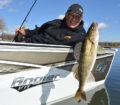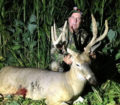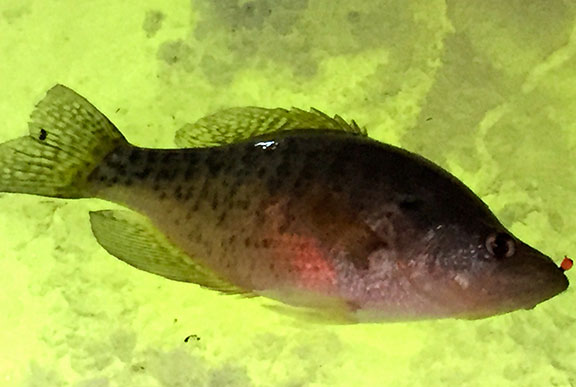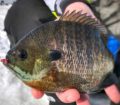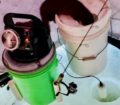By Steve Weisman
Outdoor Editor
Fur trappers and hunters in Iowa are making final preparations for the 2023 furharvester seasons that open Saturday, November 4. So, what will this year bring? To gain a true picture of furharvester data and population trends, the Iowa Department of Natural Resources (DNR) monitors population trends of Iowa furbearer species in three different ways: 1) Annual Furharvest Reports, 2) the Spring Spotlight Survey and 3) the Iowa Bowhunter Observation Survey. The result is an annual report entitled “Trends in Iowa Furbearer Populations and Harvest.”
According to Vince Evalsizer, furbearer and wetland biologist for the Iowa DNR, “Trapping in today’s world is highly regulated. That annual regulated fur harvest (trapping and predator hunting) is considered to be a valuable wildlife management tool. It can help to keep some populations in check in today’s modern world thus reducing the spread of disease or parasites such as distemper, parvo, worms, and mange among themselves and our pets. It also helps reduce human/wildlife conflicts such as livestock and poultry depredation, damage to bird feeders, gardens, orchards, apiaries, etc.”
Furharvester license numbers should be similar to the last couple of years in that 14,000 to 15,000+ range. Evalsizer says, “The average number of licensed furharvesters in Iowa follows the current fur market trends. Usually, when fur prices increase, the number of furharvesters in the state increases in subsequent years, and the opposite happens in years when fur prices are lower.” The last big spike came back in 2011-2013, when harvest values rose significantly. In those years, between 20,000 to 21,000 furharvesters purchased furharvester licenses.
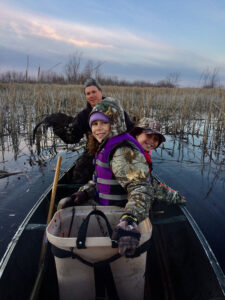
(photo by Mick Klemsrud) Although often thought of as a lone and individual activity, this furharvester mentor has two youngsters helping check traps.
Evalsizer notes that several variables can affect population numbers. Yearly and even long-term weather patterns and events, habitat, and disease can profoundly impact furbearer populations and harvest success in Iowa. According to this year’s annual report, “Precipitation, water levels and the timing of freeze-up especially affect aquatic furbearer harvests throughout the state. Species like muskrat and beaver populations can be cyclic and historically fluctuate following wet/dry periods, which can also result in fluctuating annual harvests.” However, the continuous dry conditions throughout much of the state this past summer and in some areas remain dry heading into winter, make it tough for muskrats to raise litters and overwinter successfully.
A look back at 2022-23 – specifically coyotes
For 2022-23, furbearer prices and number of pelts sold in Iowa followed current, national furbearer market trends. Average pelt prices did increase slightly from the previous year for all species except muskrats, mink, bobcats and coyotes. For coyotes, the average pelt price isn’t even half of their value from just three years ago. The trends of coyotes are extremely interesting. Back in the 1930s, the coyote harvest was next to nothing with only 517 coyotes sold throughout that entire decade. Harvests increased in the 1940s and averaged 374 per year. This continued to grow and by 2018-19, the coyote harvest was the highest on record at 18,676. The harvest for 2018-19 was nearly twice as high as the harvest in 2016-17 (9,283). In 2021, changes to the coyote fur market drastically lowered their demand in the fur trade. Subsequently, coyote harvest has been much lower in 2021 and 2022.
One other notable trend has to do with the gray fox. While coyote numbers are stronger than ever, a sad and fairly drastic population decline is occurring with the gray fox with its numbers dropping from the 1930s-40s of around 1,300 animals and then increasing to an all-time high of 3,093 gray fox harvest in the 1979-80 season. Over the last 40+ years, the numbers have plummeted to just four gray fox harvested and sold in 2022-23.
Evalsizer notes the Iowa DNR is currently conducting a pilot research project on the causes of the gray fox population decline, while similar studies have also been initiated in neighboring Midwest states.
Dollar value fluctuations
The total dollar value for all species of pelts sold in Iowa increased slightly from the previous year from $228,594 to $292,282. Mink, muskrat and raccoon were below the 5-year and long-term pelt price averages in 2022-23. Meanwhile red fox prices in 2022-23 were slightly above the 5-year average of $8.41 at $10.12, but slightly below the long-term average of $11.98.
These numbers, however, pale in comparison to when the market was stronger back in 2013. That year the total harvest value in Iowa was $6,034,386.
Current fur market in Iowa
For the upcoming 2023-24 season, according to the “Trends in Iowa Furbearer Populations and Harvest” document, the overall wild fur market outlook again looks fairly weak but may trend upward slightly from the previous year in some categories of fur such as beaver, river otter, and badger. However, that is an unbelievable drop compared to when the market was relatively strong from 2010-13.
Demand is still primarily from China and Russia, with several other smaller countries buying fur. Continued instability both politically and economically with China and Russia, plus several countries of Europe and the Middle East – have created a general decline for demand in the global fur market. At the same time, a lot of fur from last year has been held over, as sellers look for a better market.
High quality furs are still prized in the fashion/style industry. Demand for ranch mink, oil prices, current fur inventories, and other factors can give some indication how the wild fur markets will trend for the upcoming year. The trim trade for longer haired pelts such as coyotes trended down sharply again last year and may remain that way this upcoming year. The market for raccoon pelts remains weak which is unfortunate because an increased effort to harvest raccoons in Iowa is needed. Prices for beaver, bobcat, badger and otter are expected to remain somewhat decent for 2023-24. Demand for muskrat, striped skunk, opossum, red fox and weasel may remain similar to recent years for this upcoming season.
Increasing furharvester numbers
With many older, veteran furharvesters giving up fur trapping and hunting, there is great concern by both the Iowa DNR and the Iowa Trappers Association (ITA) for the need to address this downward trend. To do so, in 2023, the two organizations put together a series eight workshops held in different areas of the state for beginners, both adult and youngsters, who wanted to learn the basics of trapping Iowa.
According to ITA president, Craig Sweet, the results of the beginner trapping workshops has been excellent. “We have had all ages come to the workshops. Trapping has no age or gender limitations as all play equally on the same field. Whether young or old, male or female, trapping requires a dedication and interaction with wildlife to assist in management for healthy populations.” He continues, “Participants get to be involved in hands-on interactive trapping activities, which is something that youngsters are really liking.”
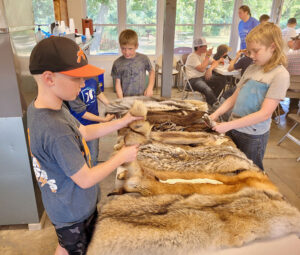
(photo by Craig Sweet) Youngsters get to experience the feel of prime pelts at the Knoxville beginner trapping workshop.
Sweet also believes that through the approach of the ITA and the results of the basic trapping workshops, “Trapping is not dying as seen with those who participate in our Beginner Trapper classes around the state. It can involve any or all family members. Over time, all trappers become family and family forever.”
ITA membership continues to increase with 1325 members currently signed up with the goal to continue increasing membership by getting youngsters and families interested in trapping. Sweet says, “A huge goal is to work together and assist with promoting and protecting trapping. We want to educate the public in wise usage and management of all wildlife species through education and ethical participation. Trapping has no age or gender limitations as all play equally on the same field.”
YouTube videos draw huge following
Trapping and YouTube…why not? Justin Deaver and Luke DeMeulenaere two of the ITA members, have helped spearhead the drive to begin the official ITA YouTube channel with ITA trapping videos going live this past mid-September. They are designed to be both informative and fun, where you might see everything from the snare beginner basics all the way to information for the seasoned vet targeting their species of choice, not only in Iowa but across the country.
Sweet says the response not only in Iowa but across the entire country has been incredible. “What this has done has really exploded our membership with memberships to the ITA coming from across the country. At the same time, we want our ITA get-togethers, workshops and our convention to be family events. We are finding a lot of youngsters wanting to be part of trapping and the ITA.”
To learn more about the ITA, go to their website at https://www.iowatrappers.com.

